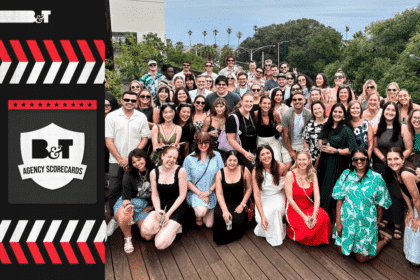An online ad needs to be on the screen for 14 seconds to have any chance of being looked at, according to a new study on the relationship between viewability, gaze time and people’s ability to remember ads.
The international study, which includes results specific to Australia, was conducted by InSkin Media, Research Now and Sticky. The research involved four companies, nearly 4,300 consumers, and technologies including eye-tracking by Sticky, and viewability measurement by Moat.
Viewable vs actually looked at
The study revealed that 25 per cent of ads defined as ‘viewable’ (i.e. meeting minimum industry guidelines of 50 per cent of the pixels being on screen for least one second) are never looked at.
One third achieve a gaze time (time spent actually looking at the ad) of less than a second, while only 42 per cent are looked at for at least a second. The median time a viewable ad is actually gazed at is 0.7 seconds.
The study also found that on average, an ad needs to be viewable for 14 seconds in order for it to be looked at for up to a second.
Ads achieving at least one second of gaze time are viewable for an average of 26 seconds. For at least two seconds gaze time, the average viewability is 33 seconds, while for 3 or more seconds of gaze time, the average viewability is 37 seconds.
*E.g. the average viewable time for ads that were looked at for at least one second was 26 seconds
How gaze time differs by ad format
The time people spend looking at ads differs significantly across four key formats covered – led by skins at 7.5 seconds down to MRECs at 0.7 seconds.
Matt Newcomb, InSkin Media’s Australian general manager, said: “Viewability is a vital first stage in campaign assessment, but we need to avoid the trap of mistaking it for a meaningful indicator of overall campaign success.
Two further stages are crucial: whether the campaign was looked at, and what impact it had.”
“The trend towards solely optimising against viewability can be counter-productive to maximising impact.
“For example, smaller formats are more likely to hit viewability thresholds, but don’t garner much visual attention, so in effect, you’d be optimising towards low engagement and therefore low impact.”
How different formats compare
By combining visual engagement time and the frequency of visual attention, the study found it was possible to generate a rationalised view of the volume of attention attracted by each format.
When comparing the total Visual Attention Score of each format as part of a whole, Australian figures ranged from 69 per cent for InSkin’s PageSkin Plus format, down to 6 per cent for MRECs.
These findings are aligned with UK data, which showed a Visual Attention Score of 72 per cent for InSkin’s PageSkin Plus, and just 2 per cent for MRECs.
Newcomb said the results for the relative attention contributed by each format were highly encouraging for InSkin.
“Having solid data to support the assertion that larger, more creatively rich formats attract an increased share of attention is an important contribution to the industry discourse around digital measurement standards,” he said.
“Without formats that appeal to real-life, human eyeballs, a lot of the debate around media effectiveness becomes academic. Advertising, at its core, is a human medium. People need to be looking.”











